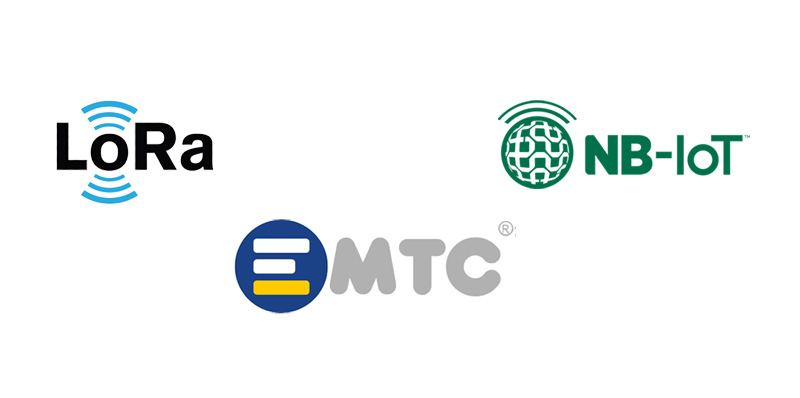The Internet of things has developed rapidly in recent years, and its future prospects are unlimited. In the process of the popularity of the Internet of things, wireless technology plays an important role in connecting the sensing layer and the application layer. In order to meet the connection requirements of long-distance Internet of things devices, lpwan (low power wide area network) technology was born according to the times. Lpwan technology is to meet the requirements of low bandwidth, low power consumption, long-distance Planning for the application of the Internet of things with large capacity, let's analyze the differences of Lora, Nb IOT and EMTC communication technologies commonly used in lpwan.

LORA Technology
One of the most widely used lpwan network technologies, this protocol comes from an ultra long distance wireless transmission plan based on spread spectrum technology adopted and promoted by Semtech company in the United States. Lora technology is very suitable for the application of the Internet of things requiring low power consumption, long distance, multiple connections, positioning and tracking.
Main features of Lora wireless technology:
Distance: 1 - 20 km
Number of nodes: 10000 or even millions
Low power consumption: battery life 3 - 10 years
Data rate: 0.3 - 50kbps
Global free operating frequency band: 433, 868, 915 MHz, etc
Low cost: lorawan price is already below USD5
NB Technology
The full name of nb-iot is narrow band Internet of things. The narrowband Internet of things is led by Huawei and has become the lpwa technology of 3GPP specification. Nb-iot can quickly support the needs of professional shopping malls through upgrading to the existing network according to the technology of existing cellular network, becoming the fourth form on Gul network.
Main features of Nb IOT wireless technology:
Distance: 1 - 10km
Wide coverage: under the same frequency band, Nb IOT has a gain of 20dB compared with the existing network, which is equivalent to improving the capacity of 100 times the coverage area
Low power consumption: the standby time of Nb IOT terminal module can be up to 10 years
Large capacity: one sector of Nb IOT can support 100000 connections
Low cost: NB IOT module no more than $5
EMTC Technology
LTE enhanced MTC, or EMTC, aims to meet the needs of IOT equipment according to the existing LTE carrier. EMTC is arranged according to the cellular network and supports the maximum 1Mbps peak rate of uplink and downlink, which is attributed to the rate in the Internet of things. Its user equipment can directly access the existing LTE network by supporting 1.4mhz RF and baseband bandwidth. In the process of LTE's continuous evolution, the latest EMTC and nbiot have further optimized the cost of the system, enhanced the endurance ability and expanded the coverage planning. The key ability of EMTC is to support mobility and positioning.
Main features of EMTC wireless technology:
Wide coverage: under the same frequency band, EMTC has a gain of 15dB compared with the existing network, which greatly improves the deep coverage of LTE network
Low power consumption: the standby time of EMTC terminal module can be up to 3-10 years
Large capacity: one EMTC sector can support 100000 connections
Low cost: EMTC chip scheme is about US $1 ~ 2
contrast
NB IOT has no mobility and very low data rate. It is more suitable for applications with no mobility, small amount of data, insensitive to delay, very sensitive to cost and large orders of magnitude of terminals, such as intelligent parking, intelligent light pole, intelligent meter reading, etc.
EMTC supports voice, fast transmission rate and mobility, but the module cost is relatively high. It is suitable for wearable devices, health monitoring, indoor mobile applications, etc.
Lora can complete flexible network construction and support not only private networks but also public networks. It is very suitable for the application of the Internet of things requiring low power consumption, long distance, many connections and positioning tracking, such as intelligent parking, intelligent field training, intelligent industry, intelligent city, intelligent community and other application fields.
As for the Internet of things communication technology, each technology has its own characteristics and advantages to meet different needs and markets. A variety of low-power wide area network technologies will shine.
If you have any questions, please contact us by the following ways